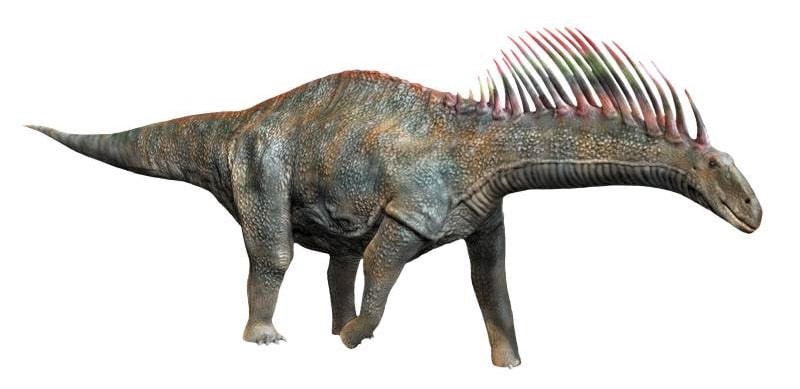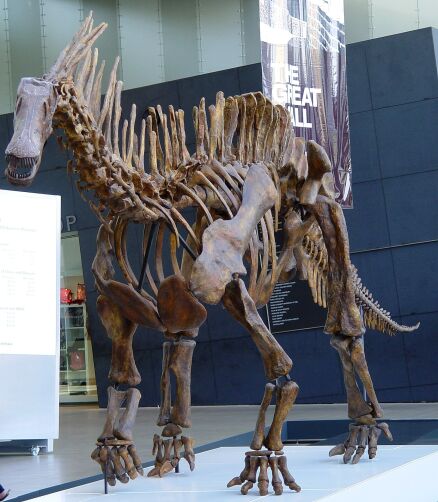
The name Amargasaurus was given to this dinosaur because of the location of the fossil in the canyon La Armaga in Argentina.
So far only one skeleton of this dinosaur has been discovered, but it was relatively complete and in good condition.
Discovered parts of the skull of sauropods are rare, but for this fossil scientists found the back of the head, as well as most of the skeleton of the trunk and limbs.
Unfortunately, not many parts of its tail bones were recoverable. These were probably damaged by erosion in the past.
| Profile | AMARGASAURUS |
|---|---|
| Prehistoric Era | Lower Cretaceous 145 million to 100.5 million years ago |
| Order | Sauropodomorpha |
| Suborder | Sauropoda |
| Family | Diplodocoidea |
| Tribe | Dicraeosauridae |
| Genus | Amargasaurus |
| Species | Amargasaurus cazaui |
| Height | 2.3 meter |
| Length | 9.5 - 12 meter |
| Weight | 4 - 5 tons |
| Territory | Argentina |
Amargasaurus was a quadruped, had a small head, a long neck and a very long tail.
Its front legs were shorter than its hind legs. All four extremities had elephantine, five-toed feet. One toe on each foot had a thumb claw, probably for protection. He may have used his whip-like tail to ward off enemies.
It belonged to a strange group of sauropods called "dicraeosaurs."
Strange because Dicraeosauridae were distinguished from other sauropods by their relatively short necks and small body size, giving rise to strange forms.
The double-rowed neck spines of Amargasaurus represent an extreme example of these strange forms.
It possessed two rows of spines that protruded along its neck and body and joined into one row at the tail.
The function of these spines is not yet fully understood and is debated among experts.

It is possible that a skin tissue ran between the spines, forming a double sail.
If so, this sail could have been a thermoregulatory structure that served to absorb and release heat.
Other researchers think it was used for mating and dominance rituals.
However, since the distance between the two rows was only 3 to 7 cm, the existence of two parallel sails seems unlikely.
Therefore, however, some scientists do not believe that it had sails.
Instead, assume that it simply rustled by violently shaking its head back and forth with these spines to make a noise.
Recent research suggests that these spines had a horn coating. If this dinosaur lowered its head, these spines would come out like a pincushion.
According to reconstruction of the anatomy of its cervical vertebrae, the neck was slightly tilted downward, so that the snout would have been only 80 cm above the ground in a neutral position.
It is believed that Amargasaurus roamed in herds and, once food supplies were exhausted, moved on.
It possessed blunt teeth suitable for stripping leaves.
It is assumed that it swallowed these leaves completely without chewing.
Amargasaurus may have had gastroliths (stomach stones) in its stomach to aid in the digestion of this tough plant material.
Amargasaurus shared its environment with other sauropods. They include:
Image source: © N. Tamura | nobu.tamura@yahoo.com | http://spinops.blogspot.com | http://paleoexhibit.blogspot.com, CC BY-SA 4.0 https://creativecommons.org/licenses/by-sa/4.0, via Wikimedia Commons
Sainterx, Public domain, via Wikimedia Commons